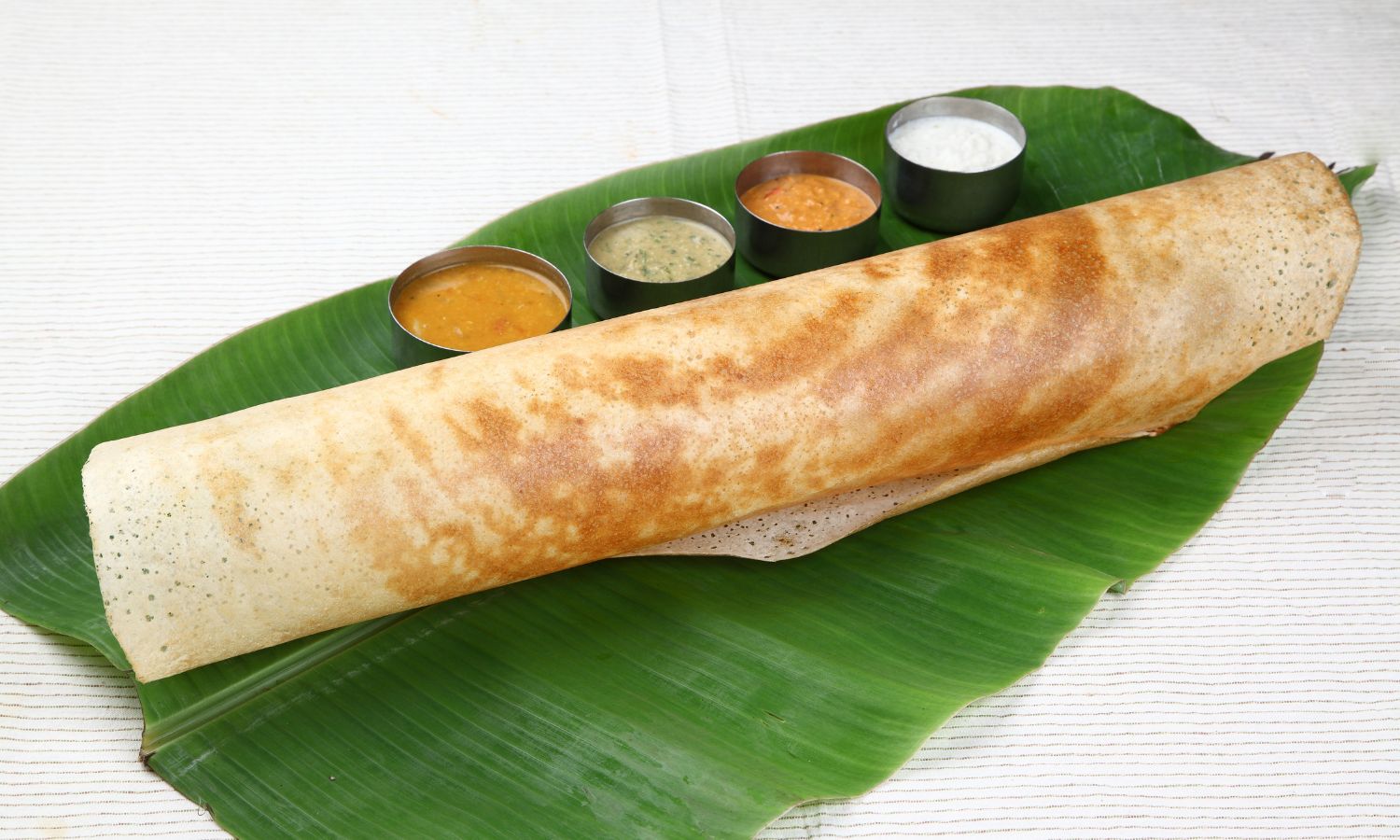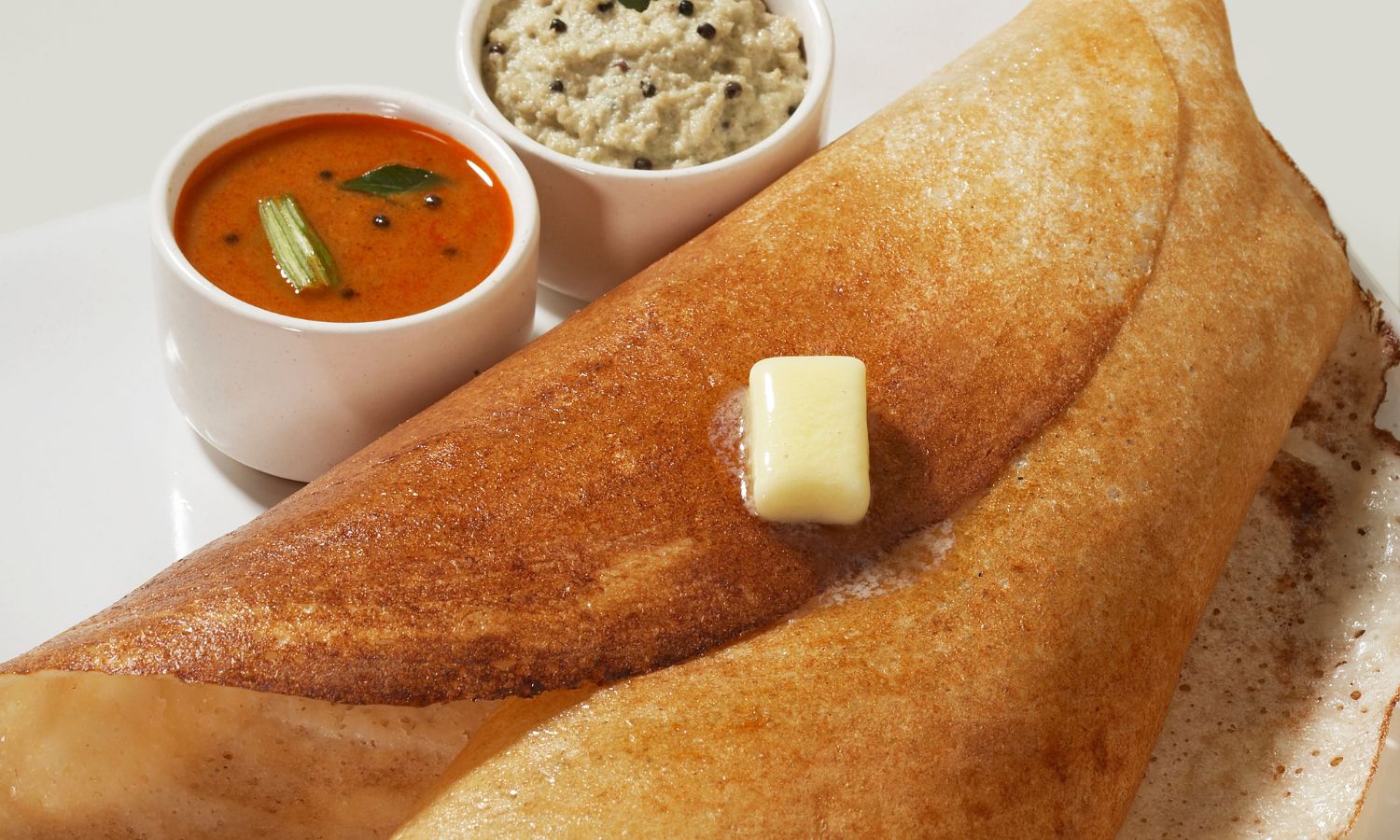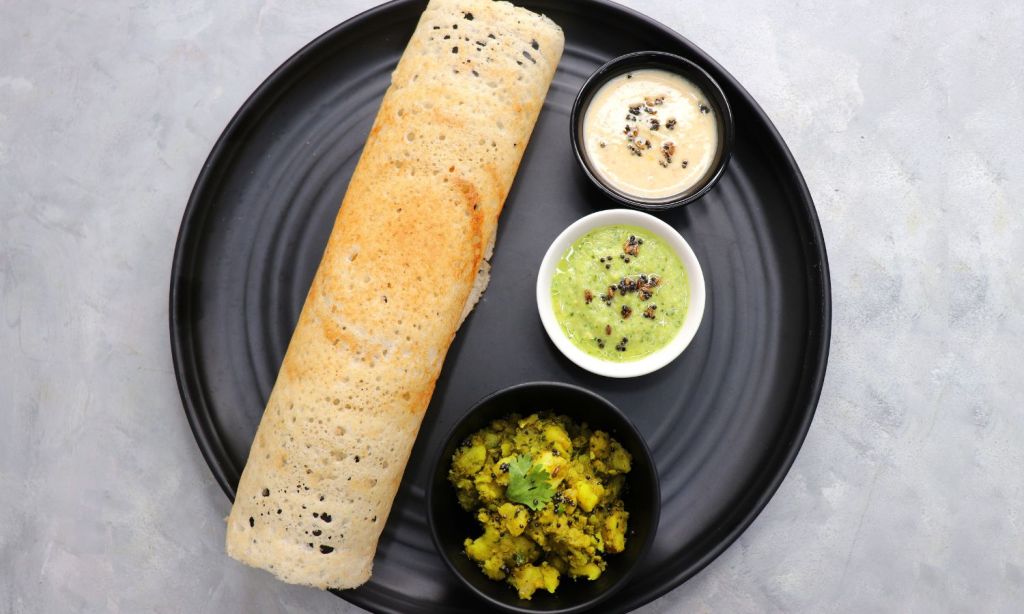What we eat and how we eat is a big part of a culture. So diving deep into a specific dish from a country — its history, role in a culture and how it’s made and consumed — is a great place to start when you want to get a better understanding of a place. This is The Latch’s Taste the World series.
One of my favourite memories growing up in the US is my Indian dad taking me and my brother to get masala dosa on Saturday afternoons. It was so fun to eat — ripping off a piece of dosa and dipping it with my hands in small bowls of sambar and coconut chutney so I had three flavours and food textures in one bite.
When I reached the yellow spiced potato mash at the centre of the rolled dosa I’d add some to the dosa tear-off, dip both into the sambar and chutney and eat it all at once. Sometimes when I’d visit family in India, we’d have it at home for breakfast.

Since moving to Australia 15 years ago, I’ve rarely had masala dosa — and I’m not sure I ever will have it regularly while living here. It’s not as common in Australia as in the US.
Originating in South India, masala dosa has two parts: yellow spiced potato mash stuffed inside dosa that looks like a rolled poster. The dosa is made of fermented rice and lentils, forming what looks like a crepe.
“There are innumerable variations depending on which state in India or whose household you are in,” says Ahana Dutt, a Sydney-based Indian chef who grew up in India (I interviewed her on her favourite places to eat Indian food in Sydney here).
“It almost always has rice with either whole or split black mung bean. If the dosa is made with rawa [durum wheat] or semolina, it’s normally not fermented. For a masala dosa, you fill the dosa with spiced potato filling made with black mustard seeds, turmeric powder and curry leaf.”
Mohammed Sali, Indian chef and owner of Malabar South Indian Cuisine in Sydney, describes it as light but filling and satisfying for the taste buds with its savouriness and crunchiness.
“Growing up I devoured masala dosa straight from the dosa tawa [specific pan to book dosa] and it was a ‘tear and share’ meal among family and friends,” says Sali. “It was mainly a meal on its own, enjoyed after school at the local dosa shop.”
When Max Kamil Hassan, co-founder and chef of Melbourne Indian restaurant Babaji’s Kerala Kitchen, was growing up in Kerala, India, his family never made masala dosa at home. He and his siblings would ask his grandmother for money to buy the dish at their favourite dosa restaurant. Whenever he returns to Kerala, he visits that same restaurant for his dosa fix which he orders alongside a chai.
“These days it’s more common to make dosa at home,” he says. “It’s sad that those dosa restaurants are becoming less common in Kerala. We started our business Babaji’s Kerala Kitchen cooking masala dosa at our local markets on tavas [dosa hotplates] that we bought with us from Kerala.”
Dutt also says her family didn’t make masala dosa at home when she was growing up in India. Her family would go to Udipi restaurants which are South Indian canteens on Sundays to enjoy it for brunch.
“My fondest memory of masala dosa is eating it at a family friend’s house,” Dutt says. “She would help me with my chemistry revisions and her mum would make hot, crisp ghee-laden masala dosa for me.”

These days in Sydney if Dutt craves masala dosa, she makes it herself. She grabs all her ingredients — idly rice, split black mung beans, chana dal, poha, fenugreek seeds — from MGM Spices on Cleveland Street in Surry Hills. To make the dosa part, she’ll ferment the batter for about two days.
“If I were to go somewhere to have a masala dosa, it would be Saravanaa Bhavan in Parramatta or North Sydney,” she says.
So does masala dosa have the potential to go mainstream in Australia? Become as well-known as curry and naan bread? Or even become a weekend brunch staple like it is in South India?
I see that there is potential, particularly considering it’s vegetarian and also dairy-free and gluten-free which aligns with the growing demand for healthier and more inclusive food options. Apart from the fermenting of the dosa, it’s also relatively easy to make.
A few factors could contribute to its mainstream popularity. The most important is increased awareness — people becoming more familiar with Indian cuisine and its offerings. High-profile chefs and food influencers could help with this. As could food videos showing it on Instagram and TikTok.
Once the awareness and demand for masala dosa are there, there needs to be accessibility. More Australian restaurants need to offer it — restaurants dedicated to Indian food and other venues serving different cuisines, even modern Australia. It’s so fun to eat, if that’s reason enough for it to mainstream, I’d say it’s highly likely.
Related: 10 French Pastries to Wrap Your Hands Around
Related: Chicken Schnitty Aside, Australia Doesn’t Have Much German Food
Read more stories from The Latch and subscribe to our email newsletter.







